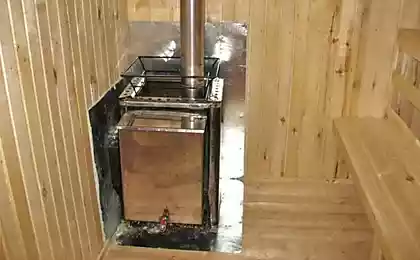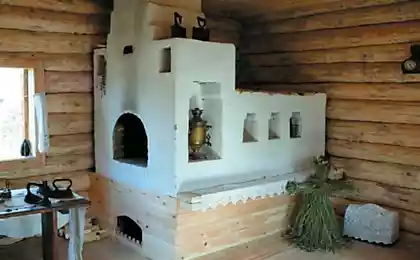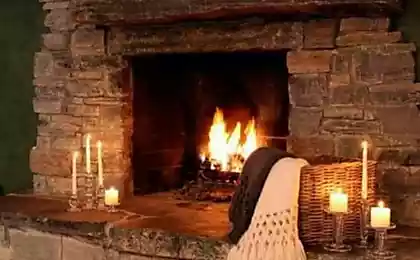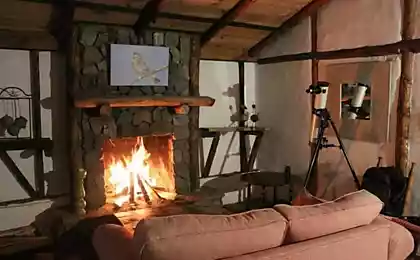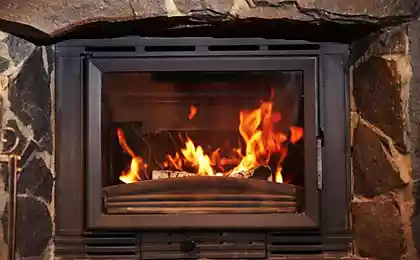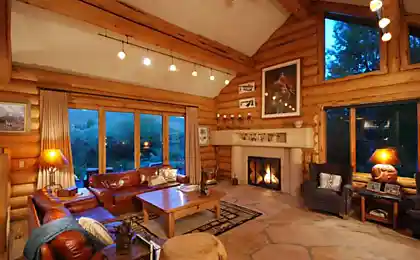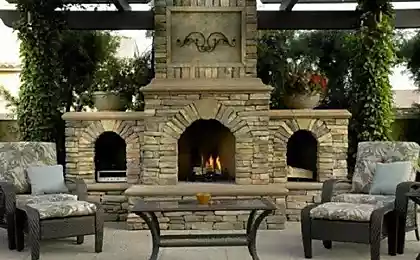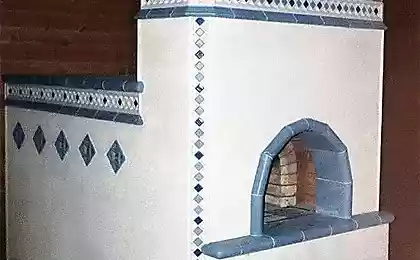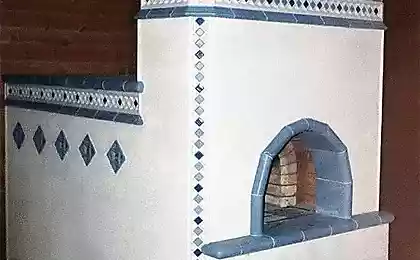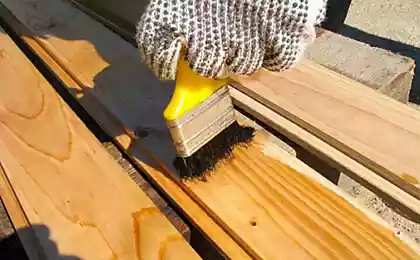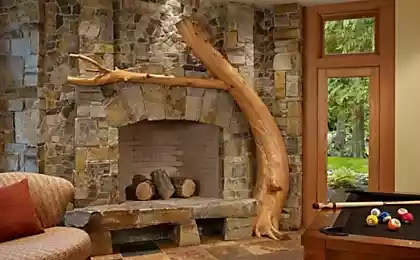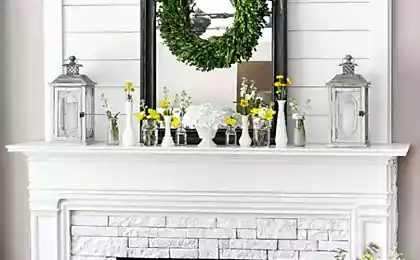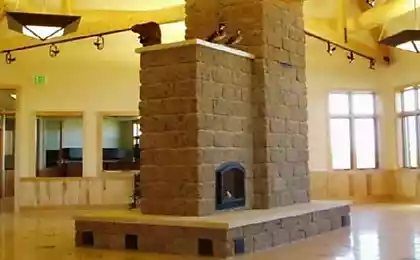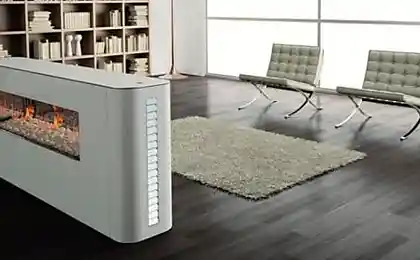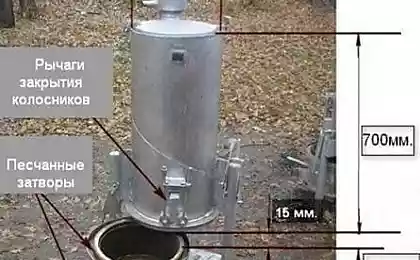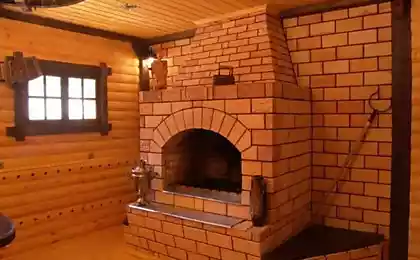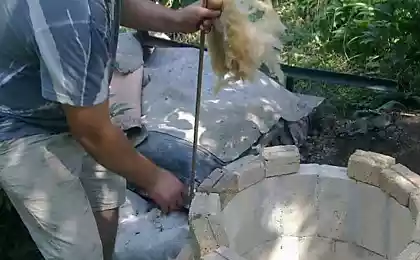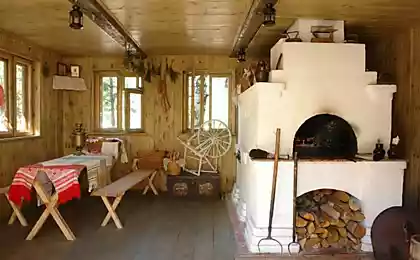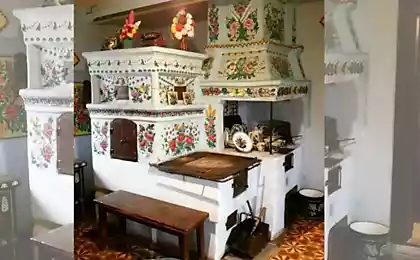650
Solid-fuel stove: the rules of fire protection
It seems that one thing the world will remain unchanged, even when it will change at all: people will heat the oven. Neither electricity nor gas will not be able to displace the solid fuel furnace in our homes. Today we talk about fire protection of the premises, which use solid-fuel stove.
Wood-burning stoves and fireplaces — these symbols of home comfort: the crackling wood in the furnace, the house spreads a soft warmth... But if you do not consider fire protection or lightly to save on it, baking can be a source of danger to property and life. A fire can begin because of one fallen from the fire-spark or an overheated wall. When we install a stove or fireplace, fire protection should be a "crucial expenditure," and to save it is impossible in any case.
Therefore, conscientious manufacturers of stoves and fireplaces in the instructions always write that in the place of installation of heating devices is necessary to protect the floor, walls and ceiling.
Screen
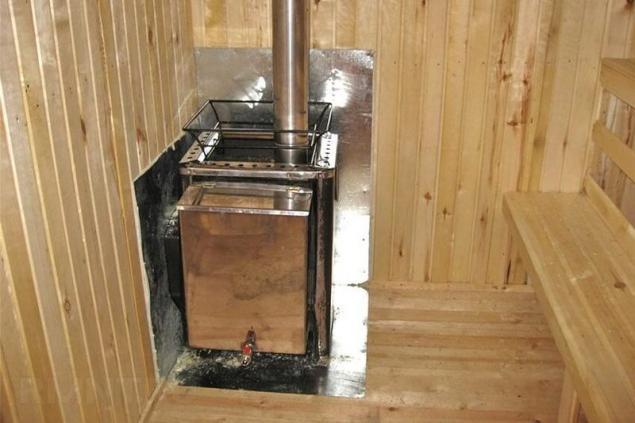
To reduce the heat radiation from the metal heater, do the shields from sheets of iron or steel. The screen lowers the temperature of the heated oven to 100 degrees. The finished screen can be easily mounted at a distance of 50 mm to the wall of the stove.
Floor
The floor on which you installed TT-oven should be protected non-combustible and durable coating. Options Foundation on which to set the oven can be the following:
How to determine the size of this fire resistant padding on the floor? Is usually made such that with each side of 100 mm was made for the perimeter of the furnace. In front of the furnace necessarily mounted predtopochnyj sheet that will protect from sparks and embers falling from the furnace. Depending on the size of the furnace, the sheet size may be small, 500х700 mm, or 400х640 mm, or 100 mm to be in the furnace with the other moans.
Now hardly anyone makes sheets the old fashioned way, nailing to the floor a piece of sheet metal. Often buy ready-made beautiful leaves made of polished stainless steel and fireplace – copper or brass, decorated with the art of etching and patina.
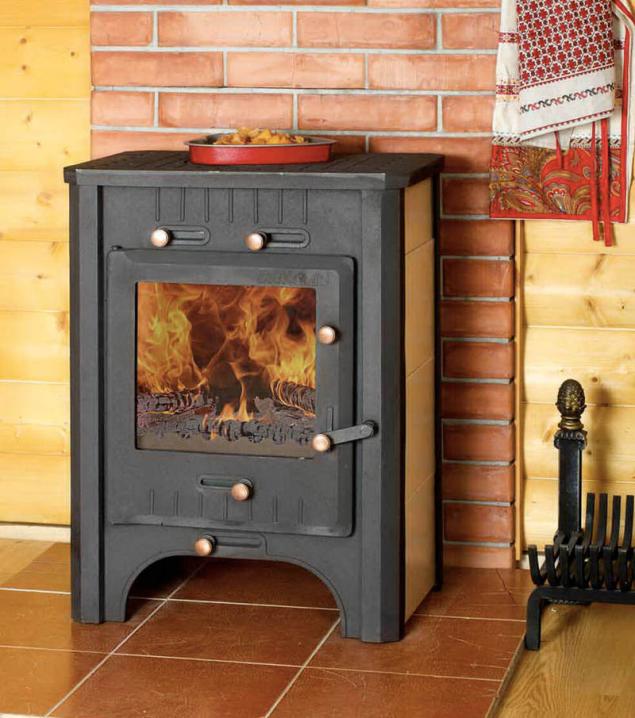
Oven should be at a minimum distance of 100 mm from the floor.
The ceiling
For fire protection of the ceiling, you can apply the same materials as for the floor, changing only the distance from the heater.
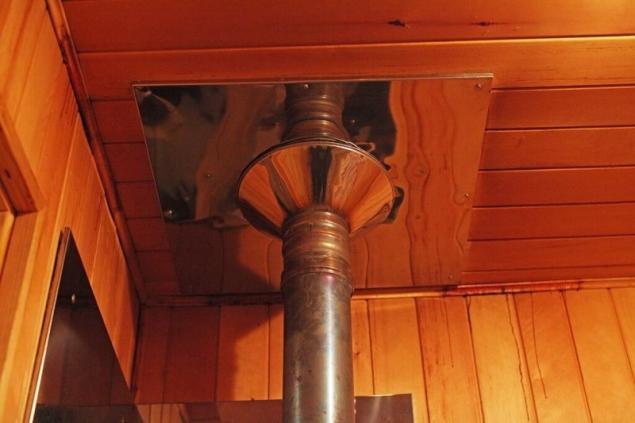
If we are talking about a stone oven (fume pipe and the top heat capacity of the furnace, covered with three rows of masonry), the ceiling must be at least 250 millimeters from the surface of the furnace. If uninsulated furnace of metal (such as most bathroom amenities), then the minimum distance of 1200 mm. If the ceiling is protected, and the furnace has insulation, the distance is reduced to 800 mm.
Fire protection on the ceiling must be greater than the perimeter of the heater – add to the perimeter of the surface of the stove at 150 mm on each side.
Wall
For optimal fire protection of solid-fuel stove is placed at a safe distance from the wall that needs to be protected from fire. Material and method for protection of walls depends on the thickness of the walls of the furnace. Participants of our portal is used for the treatment of walls fire-resistant impregnation, mastics, foaming compounds, etc. Such fire protection needs frequent updating. But more popular among users FORUMHOUSE not the compositions for surface treatment, and materials protection mats from basalt fiber, foil, fire protection, etc.
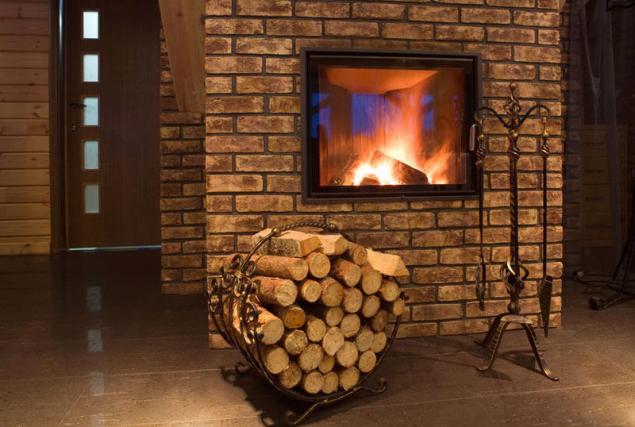
Especially popular refractory plate: vermiculite, superpower (thin plate, designed for use in the defense industry and can withstand temperatures above 1000 degrees), fiber cement panel, scope of glass sheet, gypsum sheet (gypsum fiber Board), calcium silicate (supersol). Not all of these materials are equally good, but they can withstand long-term heating up to high temperatures, conduct heat poorly and are long enough without losing strength.
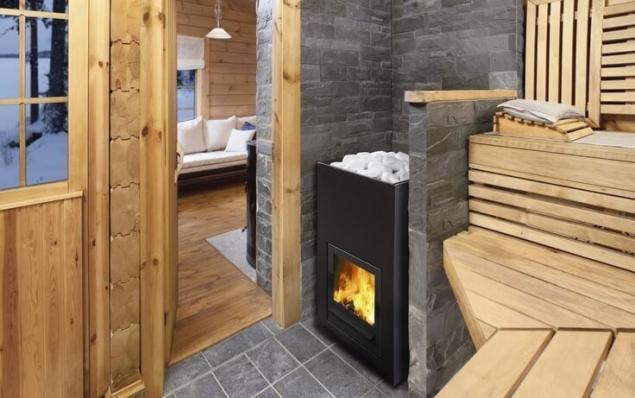
And in the baths some still use the old fashioned method: trim the walls with two layers of the felt soaked in a clay solution.
The options and combinations
Most of these materials and methods can be applied only in certain conditions, combining them with each other and observing a number of requirements. For example, the walls we finished with slabs of flame retardant material, with a certain thickness, and the metal furnace installed protective screen, etc.
Here are the options for the protection of the walls, which are used by participants of our portal (in both cases the furnaces are in the country, wall paneling):
— The wall is treated with a fire retardant, top-mounted a sheet of asbestos (or similar) height from floor to ceiling and the sides of the stove he stands at 15 inches. The top sheet of drywall, and finishes the pie — tiles for beauty.
— The lining in the checkerboard, cresting, applied two layers of basalt cardboard, it closely minerit, it roofing sheet metal with a circular cross section. The subtlety is that the sheet from the floor for the Convention should be a clearance of 5 centimeters.
A combination of several methods of wall insulation makes the protection more reliable. And Vice versa.
Distance between the stove and the wall depends primarily on the kind of the furnace. You need to keep in mind that no matter how you defended the walls, for metal furnaces distance is always necessary to lay stock..
The distance between the wall and the outer surface of the furnace at a professional Pechnikov called otstupki. It is well made otstupku protects the wall from accidental sparks that may fall out of the cracks of the door, and overheat, which leads to inflammation.
In the table, which was presented at FORUMHOUSE Alexey Telegin, shows minimum allowable distances between the stove and the wall.
Wall thickness
stoves, mm Otstupku
Distance from the outer surface of furnace or flue (pipe) to the wall (septum), mm
not protected
protected
120
Open
260
200
120
Closed
320
260
65
Open
320
260
65
Closed
500
380
If the oven is a thin-walled, and the wall surface is not protected, the distance should be 500 mm. If the oven is a thick-walled, and the wall you have protected to the maximum allowed distance is 200 mm.
When you open otstupki from all sides of the furnace there is an open space.
Closed otstupku — this design, which was closed on all or several sides. How it works, you can see from the picture below.
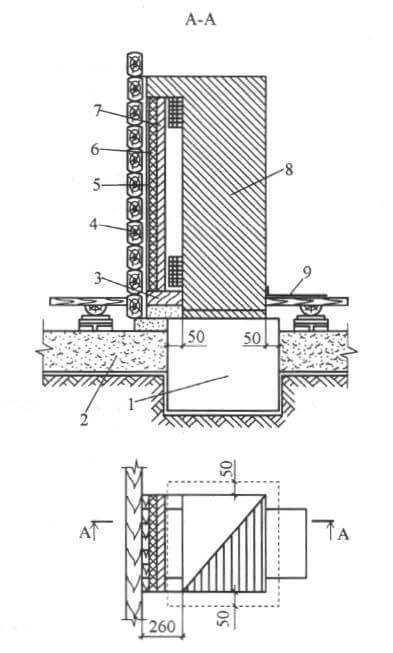
1. The Foundation of the furnace. 2. The sealing layer. 3. Fireproof floors. 4. A wooden wall. 5. The shield of the boards. 6. Insulation (asbestos or felt). 7. Brick "on the edge". 8. Oven. 9. Predtopochnyj sheet.
If the furnace (or fireplace) "bump" into some partitions – such, for example, often in the bath when the furnace itself is in the steam room, and the furnace door – in another room, between the stove and walls is also done otstupku. The less protected of the structure, the greater should be this distance.
Generally, when installing a stove or fireplace, it is recommended to carefully study the manufacturer's instructions, which usually specify the value of otstupat, and the recommended modes of operation. If the distances are not specified in the instructions, you need to examine the SNiP, which gives the certificate of conformity. The most common size otstupat there is, and even depending on the operating mode that you choose. published
Source: www.forumhouse.ru/articles/house/7178
Wood-burning stoves and fireplaces — these symbols of home comfort: the crackling wood in the furnace, the house spreads a soft warmth... But if you do not consider fire protection or lightly to save on it, baking can be a source of danger to property and life. A fire can begin because of one fallen from the fire-spark or an overheated wall. When we install a stove or fireplace, fire protection should be a "crucial expenditure," and to save it is impossible in any case.
Therefore, conscientious manufacturers of stoves and fireplaces in the instructions always write that in the place of installation of heating devices is necessary to protect the floor, walls and ceiling.
Screen

To reduce the heat radiation from the metal heater, do the shields from sheets of iron or steel. The screen lowers the temperature of the heated oven to 100 degrees. The finished screen can be easily mounted at a distance of 50 mm to the wall of the stove.
Floor
The floor on which you installed TT-oven should be protected non-combustible and durable coating. Options Foundation on which to set the oven can be the following:
How to determine the size of this fire resistant padding on the floor? Is usually made such that with each side of 100 mm was made for the perimeter of the furnace. In front of the furnace necessarily mounted predtopochnyj sheet that will protect from sparks and embers falling from the furnace. Depending on the size of the furnace, the sheet size may be small, 500х700 mm, or 400х640 mm, or 100 mm to be in the furnace with the other moans.
Now hardly anyone makes sheets the old fashioned way, nailing to the floor a piece of sheet metal. Often buy ready-made beautiful leaves made of polished stainless steel and fireplace – copper or brass, decorated with the art of etching and patina.

Oven should be at a minimum distance of 100 mm from the floor.
The ceiling
For fire protection of the ceiling, you can apply the same materials as for the floor, changing only the distance from the heater.

If we are talking about a stone oven (fume pipe and the top heat capacity of the furnace, covered with three rows of masonry), the ceiling must be at least 250 millimeters from the surface of the furnace. If uninsulated furnace of metal (such as most bathroom amenities), then the minimum distance of 1200 mm. If the ceiling is protected, and the furnace has insulation, the distance is reduced to 800 mm.
Fire protection on the ceiling must be greater than the perimeter of the heater – add to the perimeter of the surface of the stove at 150 mm on each side.
Wall
For optimal fire protection of solid-fuel stove is placed at a safe distance from the wall that needs to be protected from fire. Material and method for protection of walls depends on the thickness of the walls of the furnace. Participants of our portal is used for the treatment of walls fire-resistant impregnation, mastics, foaming compounds, etc. Such fire protection needs frequent updating. But more popular among users FORUMHOUSE not the compositions for surface treatment, and materials protection mats from basalt fiber, foil, fire protection, etc.

Especially popular refractory plate: vermiculite, superpower (thin plate, designed for use in the defense industry and can withstand temperatures above 1000 degrees), fiber cement panel, scope of glass sheet, gypsum sheet (gypsum fiber Board), calcium silicate (supersol). Not all of these materials are equally good, but they can withstand long-term heating up to high temperatures, conduct heat poorly and are long enough without losing strength.

And in the baths some still use the old fashioned method: trim the walls with two layers of the felt soaked in a clay solution.
The options and combinations
Most of these materials and methods can be applied only in certain conditions, combining them with each other and observing a number of requirements. For example, the walls we finished with slabs of flame retardant material, with a certain thickness, and the metal furnace installed protective screen, etc.
Here are the options for the protection of the walls, which are used by participants of our portal (in both cases the furnaces are in the country, wall paneling):
— The wall is treated with a fire retardant, top-mounted a sheet of asbestos (or similar) height from floor to ceiling and the sides of the stove he stands at 15 inches. The top sheet of drywall, and finishes the pie — tiles for beauty.
— The lining in the checkerboard, cresting, applied two layers of basalt cardboard, it closely minerit, it roofing sheet metal with a circular cross section. The subtlety is that the sheet from the floor for the Convention should be a clearance of 5 centimeters.
A combination of several methods of wall insulation makes the protection more reliable. And Vice versa.
Distance between the stove and the wall depends primarily on the kind of the furnace. You need to keep in mind that no matter how you defended the walls, for metal furnaces distance is always necessary to lay stock..
The distance between the wall and the outer surface of the furnace at a professional Pechnikov called otstupki. It is well made otstupku protects the wall from accidental sparks that may fall out of the cracks of the door, and overheat, which leads to inflammation.
In the table, which was presented at FORUMHOUSE Alexey Telegin, shows minimum allowable distances between the stove and the wall.
Wall thickness
stoves, mm Otstupku
Distance from the outer surface of furnace or flue (pipe) to the wall (septum), mm
not protected
protected
120
Open
260
200
120
Closed
320
260
65
Open
320
260
65
Closed
500
380
If the oven is a thin-walled, and the wall surface is not protected, the distance should be 500 mm. If the oven is a thick-walled, and the wall you have protected to the maximum allowed distance is 200 mm.
When you open otstupki from all sides of the furnace there is an open space.
Closed otstupku — this design, which was closed on all or several sides. How it works, you can see from the picture below.

1. The Foundation of the furnace. 2. The sealing layer. 3. Fireproof floors. 4. A wooden wall. 5. The shield of the boards. 6. Insulation (asbestos or felt). 7. Brick "on the edge". 8. Oven. 9. Predtopochnyj sheet.
If the furnace (or fireplace) "bump" into some partitions – such, for example, often in the bath when the furnace itself is in the steam room, and the furnace door – in another room, between the stove and walls is also done otstupku. The less protected of the structure, the greater should be this distance.
Generally, when installing a stove or fireplace, it is recommended to carefully study the manufacturer's instructions, which usually specify the value of otstupat, and the recommended modes of operation. If the distances are not specified in the instructions, you need to examine the SNiP, which gives the certificate of conformity. The most common size otstupat there is, and even depending on the operating mode that you choose. published
Source: www.forumhouse.ru/articles/house/7178
